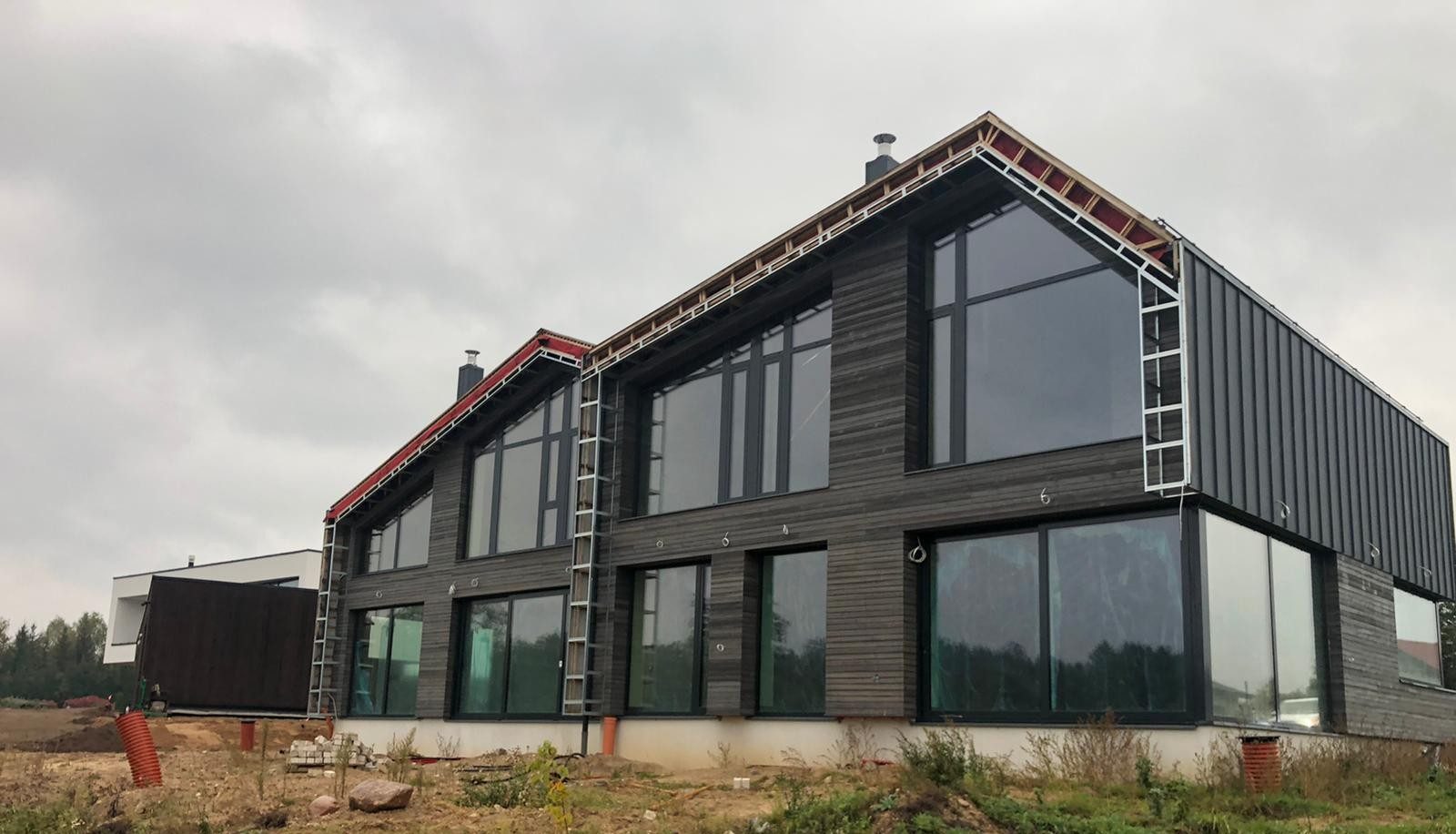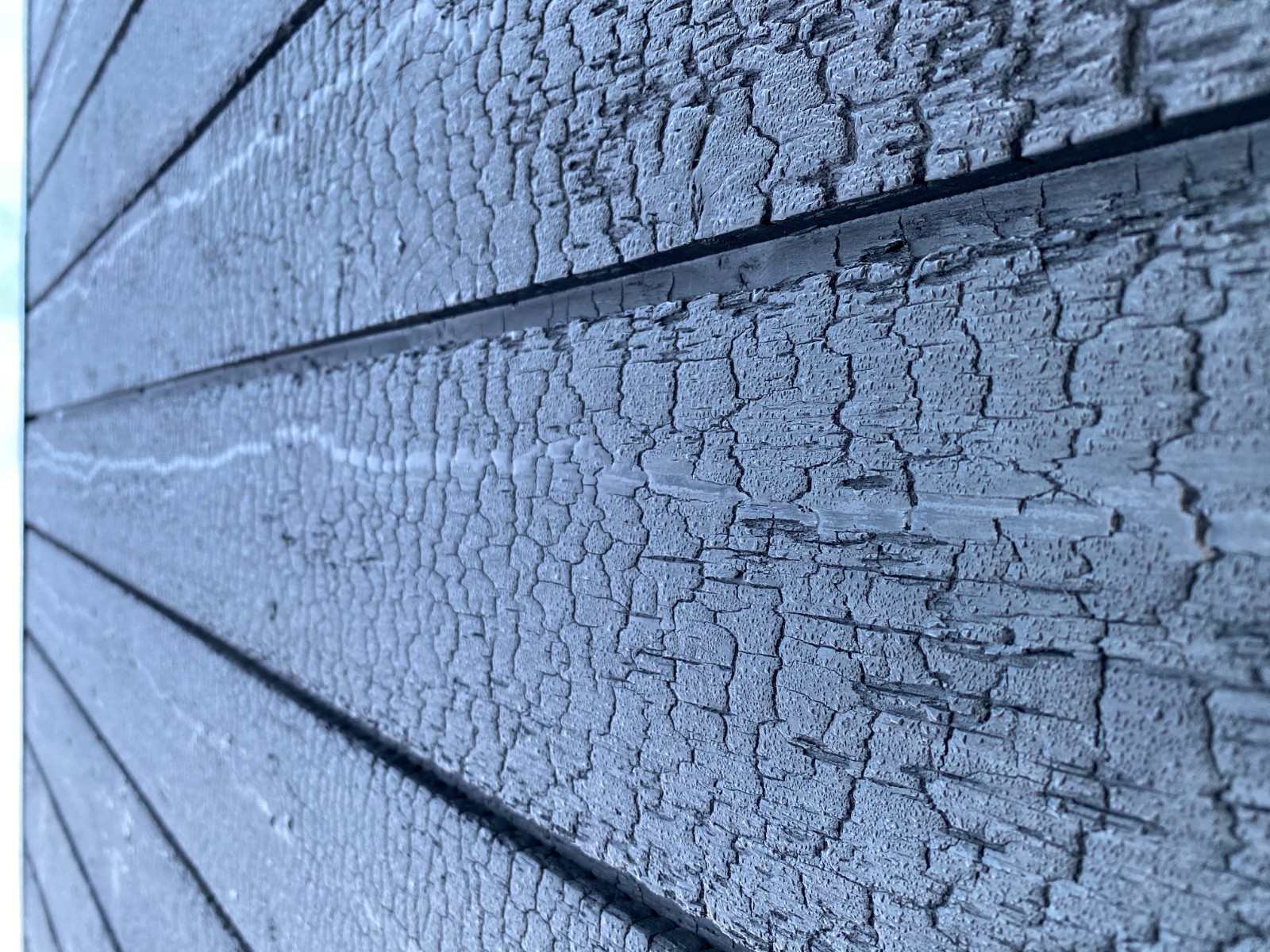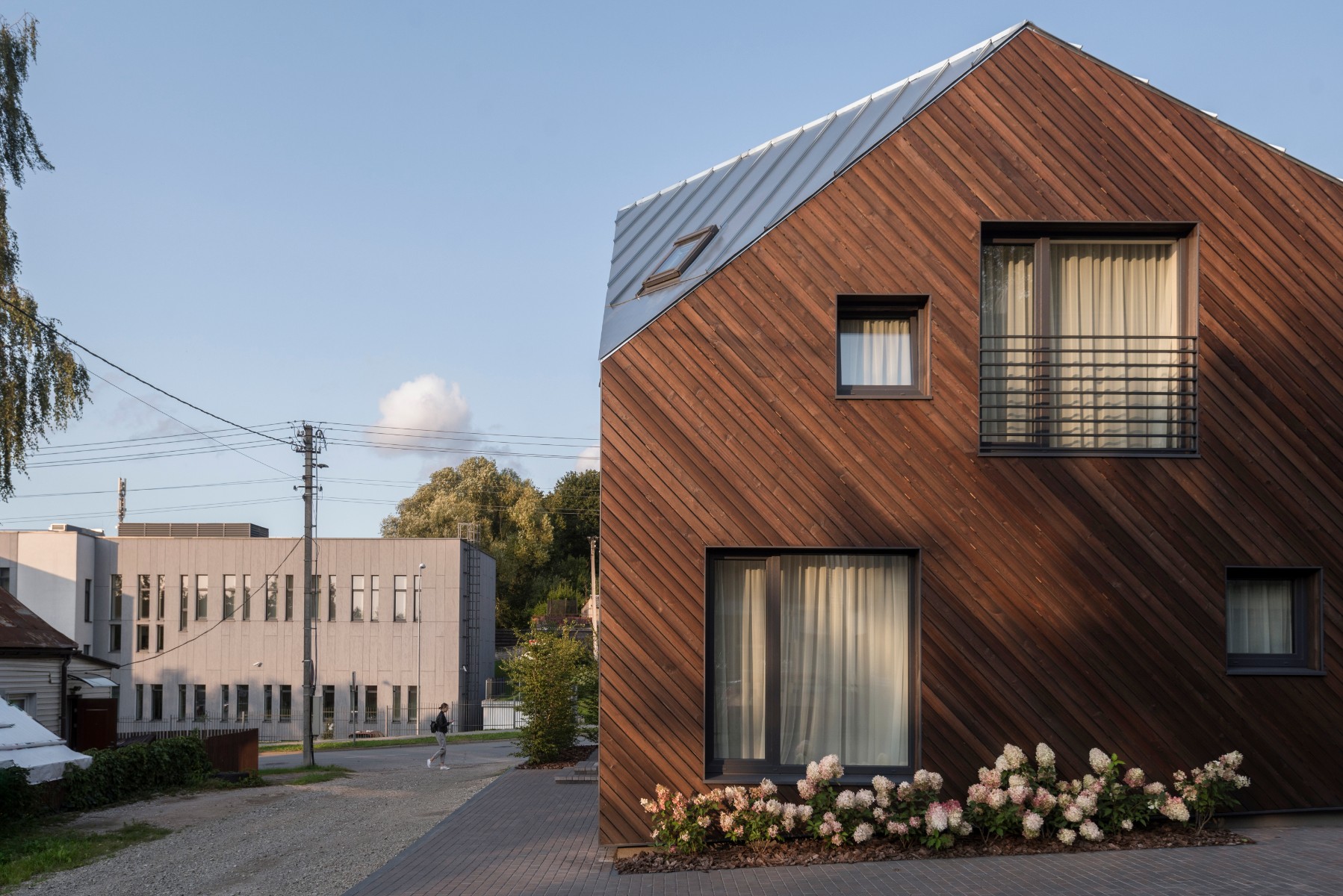Wood Siding vs. Vinyl
A home is a haven from the outside world, giving solace from the daily grind and shielding us from the elements. Most frame-built houses have siding that acts as a protective barrier. Quality cladding must withstand heat, cold, moisture, and constant sun exposure. It expands and contracts during extreme temperatures and changing weather conditions. Wood and vinyl are two of the most common siding options. A comparison look reveals these two materials offer very different advantages.

Wood Siding
For centuries, wood cladding has covered exterior surfaces of homes, barns, and other structures. Pine, Spruce, and Cedar are popular siding choices, with many different wood varieties available depending on region and the homeowner’s price point. During installation, boards are mounted to the building’s exterior providing elegant protection from the elements.
The Japanese wood-burning technique known as Shou Sugi Ban or Yakisugi offers additional benefits for cladding lumber. Burnt wood is sealed by its charred outer layer, giving the boards outstanding durability and resistance to moisture, rot, and pests. Below we’ve included the main pros and cons of wooden cladding options.
Pros
Wood siding offers homeowners excellent value, great beauty, and minimal environmental impact. These characteristics make wood cladding an attractive home improvement option, especially when using Shou Sugi Ban for maximum benefits.
1. Longevity and Investment Return
With proper maintenance, wood siding can last 100 years or more. The Shou Sugi Ban technique makes longevity incredibly attainable. After scorching, the burnt wood receives an oil treatment to protect it from the elements further, making the finished product remarkably resilient. As resale value is a significant consideration for any home improvement project, wood cladding presents an attractive option as it will add substantial value to your home.
2. Aesthetic Appeal

Wood siding has a ruggedly beautiful appearance. Each lumber type offers a range of natural hues and can be stained and painted in many additional colors. A wooden home exterior is classic yet modern, creating a seemingly timeless effect. Burnt timber treated with the Yakisugi technique has an incredibly lasting quality. It will not quickly fade with sun exposure. The charred wood retains its original rich and vibrant color for many years.
3. Environmental Impact
Acting as additional insulation, wood cladding makes an excellent investment for your home’s energy-efficiency and helps reduce climate control costs during the summer and winter months. Wood siding is also biodegradable, raising fewer environmental concerns about disposal. When replacement does become necessary in the distant future, you can rest easy knowing wood cladding will not sit for centuries in a landfill.
Cons
As with any investment, there are several factors to consider when thinking about wood cladding as an option. Homeowners should be aware of cost and maintenance requirements that come with an exterior timber siding.
1. Maintenance
Wooden home exteriors need regular upkeeping to maintain their stunning natural beauty throughout the years. Stains and sealants allow the wood siding to remain aesthetically pleasing and functional as long as possible. However, Shou Sugi Ban once again offers advantages for maintenance needs. Because the outer carbon layer of char seals the burnt wood, Yakisugi products require less frequent and fewer treatments than uncharred timber.
2. Cost

For those interested in wood cladding, it’s important to note the higher price point. Shou Sugi Ban can last and maintain sound performance for many years. As a significant investment, it comes with the financial benefit of increased home value. Read more on wood siding costs.
Vinyl Cladding
Since hitting the market during the 1950s, vinyl has become another standard siding option. Most varieties are a resilient form of plastic called polyvinyl chloride (PVC). This type of cladding uses sheets of overlapping or interlocking material to cover exterior walls.
Pros
Vinyl siding is a relatively new exterior home product and presents a few positive features for homeowners to consider. A wide variety of colors and styles and low cost are two positive aspects that vinyl cladding offers.
1. Color and Style Options
Because vinyl is a form of plastic, manufacturers can offer many colors and styles. A popular style called Dutch lap mimics the appearance of thin, overlapping planks. Vinyl cladding can also resemble other exterior surfaces such as brick, stone, or even wooden shake tiles.
2. Cost
Vinyl cladding is an affordable option, with one of the lowest price ranges of available siding materials. High-quality vinyl is a bit more costly for both the product and installation, making the pricepoint for top-of-the-line vinyl comparable to other cladding options such as stucco, brick, and wood.
Cons
As with any product, vinyl cladding also presents several disadvantages. Surprisingly this siding option requires regular maintenance and can lose appeal due to outdated appearance or damage from extreme temperatures.
1. Maintenance
Vinyl siding does not require painting or other treatment, but professional cleaning is recommended every 2 to 3 years. Homeowners can clean their vinyl cladding with a power-washer, but that method will not fully eradicate mold or mildew buildup.
2. Lacking Aesthetic Appeal
Despite the enormous variety of colors and styles for vinyl siding, many options miss the mark when it comes to aesthetic appeal. This type of cladding aims to mimic other surfaces, but the imitation does not compare to the original. Colors palettes for home design vary over time. While it is possible to obtain vinyl siding in almost any color, some hues quickly become outdated, leaving some homeowners with an ever-decreasing curb appeal.
3. Damage From Extreme Temperatures
Another drawback of vinyl siding products is the possibility of severe damage when exposed to heat or cold. When temperatures reach below freezing, this material is prone to cracking, especially if bumped by heavy objects like a car fender or large rolling garbage can. When installed in hotter climates, vinyl cladding is likely to warp. The heat from bonfires or gas grills can even melt the hard-plastic surface.
Overall Comparison of Wood and Vinyl
When comparing wooden vs. vinyl cladding, both options present very different advantages. While vinyl extends a relatively user-friendly maintenance schedule and many color options, wood cladding offers a timeless aesthetic that will last many years and is biodegradable. Charred timber siding treated with the Shou Sugi Ban technique grants even more significant benefits, as it is resistant to damage from UV radiation, moisture, and pests.
Want to learn more about Shou Sugi Ban wood cladding? Degmeda offers a large selection of wood siding products. With many charred timber varieties and stunning color palettes, Degmeda has a Yakisugi alternative for any of your construction needs. Visit the Degmeda website to learn more. Check out our gallery of Shou Sugi Ban cladding projects.